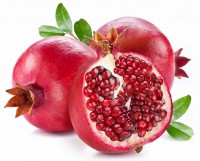
January 28 – February 2, 2013
Primo’s Outlook
Lettuce:
Market is steady at elevated levels. We are seeing only minor quality defects on inbound.
Leaf:
Romaine market is very strong with very light supplies. Overall quality has been very good, but we are seeing occasional issues. Red leaf market is strong, green leaf is a little weaker.
Broccoli:
Broccoli market remains strong. Shippers are very short on product and pro-rating. Quality has been good overall.
Cauliflower:
Cauliflower market is softening a little. Quality has been very good.
Carrots:
Market has moved to Georgia with good volume and quality.
Celery:
Celery market has gone up significantly. Quality has been very good.
Strawberries:
Florida berry quality has been good overall. Market has been steady to lower.
Potatoes:
Idaho market has moved up slightly for this week and next, due to cold weather in Idaho. Trucks remain very tight.
Onions:
Onion market has leveled off for now with pricing still very high, and will remain that way for a bit with very small increases if any.
Citrus:
Market is steady on navels and lemons. Quality has been good on lemons and very good to excellent on oranges.
Cucumbers:
Market on cucumbers is weaker than last week, but still strong.
Peppers:
Market is up slightly, okay volume & very good quality.
Tomatoes:
Tomato market is steady on rounds. Grapes, cherries, and romas are also steady.
Red grapes continue to be in very short supply and the market remains very strong. Current supply situation is expected to continue for at least a few more weeks.
The weather in the Arizona desert has improved, however, most products remain in short supply.
Feature of the Week
This week Primo is featuring Pomegranates. For centuries, pomegranates have been cherished for their exquisite beauty, flavor, color, and health benefits. From their distinctive crown to their ruby red arils, pomegranates are royalty amongst fruit. They are symbolic of prosperity and abundance in virtually every civilization. Fortunately, this treasure’s versatility and possibilities are as abundant as the juicy arils bursting forth from within.
Pomegranates are one of the healthier foods you can eat. High in antioxidants, potassium, vitamin C, and a great source of fiber, pomegranates pack a nutritional punch that most foods can’t come close to!
Decorate with Pomegranates. To dry them, arrange whole pomegranates in a single layer on a rack. Keep them in a cool place a few weeks for use in centerpieces and other decorations. Rotate the fruit periodically to prevent flattening on one side. Once dried, pomegranates can last many years.
Recipe of the Week
Spinach Pomegranate Salad
8 cups spinach leaves, no stems, torn into bite size pieces
2 small oranges peeled, cut into bite size pieces
¼ to ½ small red onion
½ medium pomegranate, seeded
Combine spinach, oranges and onion in a serving bowl and toss to mix. Add pomegranate arils to salad.
Dressing:
2 tablespoons vegetable oil
2 tablespoons honey
2 teaspoons grenadine syrup
¼ teaspoon chili powder
Combine oil, honey, grenadine syrup and chili powder and mix well. Pour dressing over salad, and toss gently.
Makes about 8 servings.
Fun Facts of the Week
The name “pomegranate” derives from the Middle French “pomme garnete,” literally meaning “seeded apple.” It is also sometimes referred to as a Chinese apple. Many scholars believe that the forbidden fruit, in which Eve indulged within the Garden of Eden, was actually a pomegranate.


